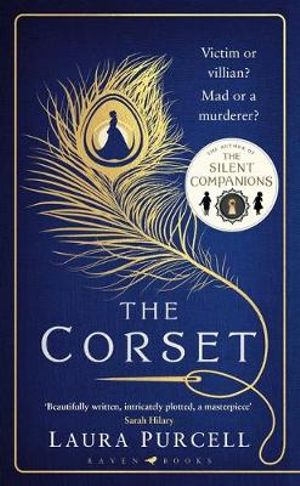I confess upfront that a 19th century gothic flavoured psychological thriller is close to my ultimate idea of a novel. ‘The Corset’ combined so many of my favourite tropes that I struggled, like really struggled, to put it down. Any interruption while reading is of course not an interruption but an ‘unwelcome intrusion’ (even ‘invasion’ depending on the severity and frequency of it!), and none felt more so than when I was reading this book. I finished it late at night because I simply had to be undisturbed. And I’m so glad I did.
The narrative uses two viewpoints to draw the reader in. Both young women but from very different classes of society, which of course informs their ability and power to determine their own fate. To begin with the aristocrat Dorothea Truelove is challenging her Father by exploring phrenology, the Victorian scientific belief that the shape of a person’s skull can reveal and determine their disposition and proclivity to crime. As such, Dorothea visits Oakgate prison to study the skulls of female inmates and record her observations. While doing this she meets our second character, sixteen year old Ruth Butterham, incarcerated for murder, which she willingly admits to. However, what she divulges to our aspirational do-gooder is that she can kill people by her sewing. As a seamstress, whatever she is thinking, feeling, dreaming, or wishing at the time is embedded in the garment, causing something supernatural (?) to transpire so that when the person puts on the clothes they fall victim to what she has sewn into the fabric. This operates as a fantastic metaphor, but is it only that? I was addicted to the growing feeling of unease and uncertainty as I connected with each woman and wondered about what was really happening, what was true, who was mad and who was playing who.
The contrast of each character’s backstory was described and conveyed with such realism, that I felt every slight and abuse of Ruth growing up in poverty, as well as the frustration and feeling of implosion that Dorothea experienced living in a gilded cage. ‘The Corset’ is at times brutal, like Dickens, in its portrayal of the hardship and struggles of the lower class in Victorian times, and yet it never felt gratuitous or unnecessary, but rather compelling as I peeled off the layers of this mysterious young woman and saw how her earlier influences and experiences shaped her. What also fascinated me was the way Ruth’s story began to affect Dorothea and the dance of confession, truth and intimacy in their relationship.
In the end, late at night, I finished the book and lay wondering, as you do after the great ones, about all the fine tendrils that connected the narrative and that brought these two women, so different yet so similar, to life in my mind. But who was mad, what was the truth and who was a murderer? Stop it. I’m not telling. You’ll just have to have your own late night read to find out…
Reviewed by Belinda


